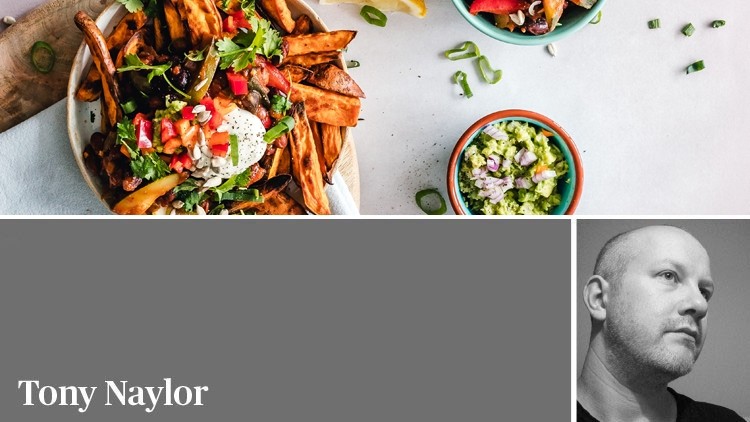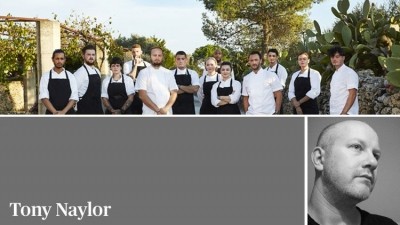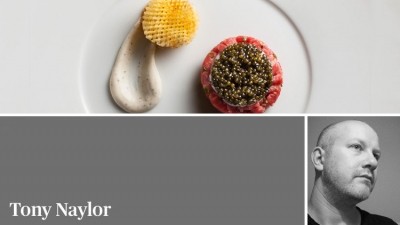Thinking outside the lunch box

You do not need me or the statistics recently reported by our sister title MCA (visits down 7% in the last year), to tell you lunch is tough right now. Tour any city centre outside London at 1pm on a weekday and tumbleweeds blow through many restaurants. A few hip, nimble small plate venues buck this trend with tight three-for-£15 menus, but in full-service dining rooms (table settings rather than cutlery in tin cans, breaks £15-a-head with a drink), few tables are occupied. It is a death spiral. Potential walk-ins walk on. Empty restaurants give off bad vibes.
After a decade of casualisation and financial uncertainty, this is the new reality. Lunch is now dominated by super-casual all-day café-diners and third-wave coffee shops, street food and its food hall legacy, Greggs and Leon, which, collectively, have redefined lunch as a meal you spend £2-£5 on (takeaway) or £8-£12 (eat-in), in informal premises far removed from the traditional restaurant.
In this context, no offers or inducements are going to transform our better independent restaurants, those occupying that space above mid-market chains up to Michelin star restaurants, into buzzy lunch spots. They look, feel and are too expensive. Your £25 set menu may be good value objectively, but beyond most budgets regularly, even before we get into glasses of wine at £10, service charges and the psychological barrier that your concurrent £80 tasting menu creates.
Many operators are, therefore, resigned to using weekday lunches as non-profit marketing or have abandoned this service altogether, and now pay the bills (or not) off four or five services from Thursday evening to Sunday afternoon. That may work in select cases, but it is a literal waste of space you pay rent on 24/7, during hours when the kitchen is often open as staff prep. Thinking laterally, could you run distinct day-night menus or concepts in that space, and revive your lunchtime trade?
That idea (café by day, bistro by night) was common historically and, for all the complaints that it confuses an offer, it could be again. True, it takes effort and ingenuity to turn a space operating as, for instance, a counter-service takeaway at lunch into a dining room at night, but it isn’t impossible. From rearranging and relaying tables, altering music, lighting and minor decorative features, changing an A-board or even exterior signage, there are things that can be done. In fact, given how diners increasingly crave novelty and choice, that duality may bring fresh energy to your business.
Clever restaurants already do this, with no issue. The modish lunch soups and sandwiches served at Manchester’s Creameries in no way detract from its classy evening menu. Across town, The Refuge is not defined by its £7.50 ‘people’s lunch’. As it serves bento boxes (from £8.95), Liverpool’s Etsu naturally does them to take away, too, while in Birmingham, Indian Streatery serves grab ’n’ go lunch curries from a street cart-styled counter within the restaurant. The widespread wine bar model: serving charcuterie and cheese outside evening service, is also a cute, simple way to create an all-day site.
Such innovative lunch options, from rotating food traders taking over your kitchen to, if you bake and retail sourdough, selling amazing takeaway sandwiches – are limited only by historic prejudice, personal taste and staff resistance. Few chefs will relish sharing a kitchen with a third-party, but given soaring costs and changing consumer behaviour, such collaborative use of space is the future.
Lunch is not dead. People are still eating it, just not in restaurants. You may hate that. But clever owners will park that emotion and adapt, while they can.
This is a web version of an article that first appeared in the September issue of Restaurant magazine, the leading title for the UK's restaurant industry. For more features, comment, interviews and in-depth analysis of the restaurant sector subscribe to Restaurant magazine here.
Follow Tony on Twitter: @naylor_tony










